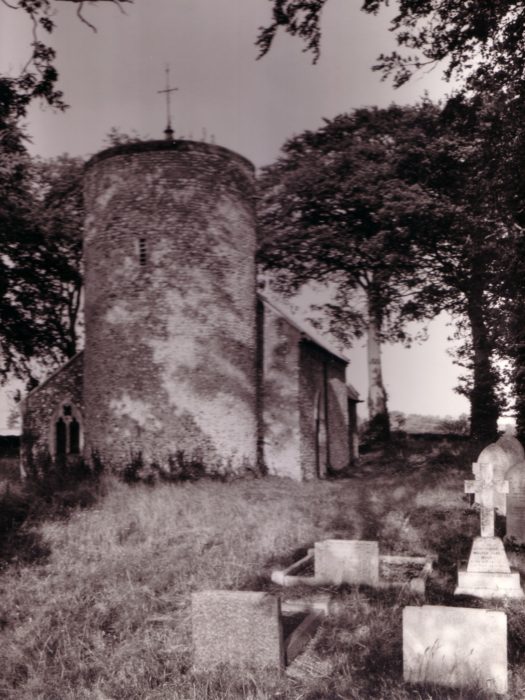The word ‘remote’ has figured more than once in the description of the Churches covered so far in these descriptions of the Norfolk Churches Trust’s leased churches. It could only be that Lady Harrod loved the churches in the landscape of Norfolk and the more remote and isolated they happened to be the more she resolved to take them into the Trust’s care if they became redundant. There can be few more remote than Barmer, All Saints. It sits off the road near Fakenham, about 250 yards across a field in a copse of oaks and chestnuts. It is invisible from the road apart from a glimpse of its rather squat round tower through the trees. There are supposed to be traces of a Saxon hamlet, but nothing further is known of any village. Could it have been fired as a result of the plague? We shall never know.
Whatever happened to the village, the Church survived after a fashion. In 1602 it was already a ruin and so it remained for close on 300 years. Then in 1885 the Kerslake family decided to turn it into a Mausoleum and employed the well-known Victorian architect Frederick Preedy to restore the Church. What exists today is largely Preedy’s work, but there are glimpses of its earlier history. The round tower is Norman, but the origins may have been Saxon as indicated by the flint quoins at the west end of the nave. The chancel arch is 12th Century, the nave 13th Century. The church was finally declared redundant in 1970 and was taken over by the Norfolk Churches Trust in 1978.
The description most commonly applied to this little church is ‘romantic’. I quote from Mortlock and Roberts’ Popular Guide to Norfolk Churches: “Standing in the base of the tower you can see right to the top – the silence broken only by the soughing wind that sweeps across the open fields and through the trees”.
All Saints can be found in the middle of a field off the B1454, postcode PE31 8SR. The church is normally open during daylight hours, and if necessary the keyholder can be contacted on 01485 578220.
Find out more about this church on the Norfolk Churches website and the Norfolk Heritage Explorer.






